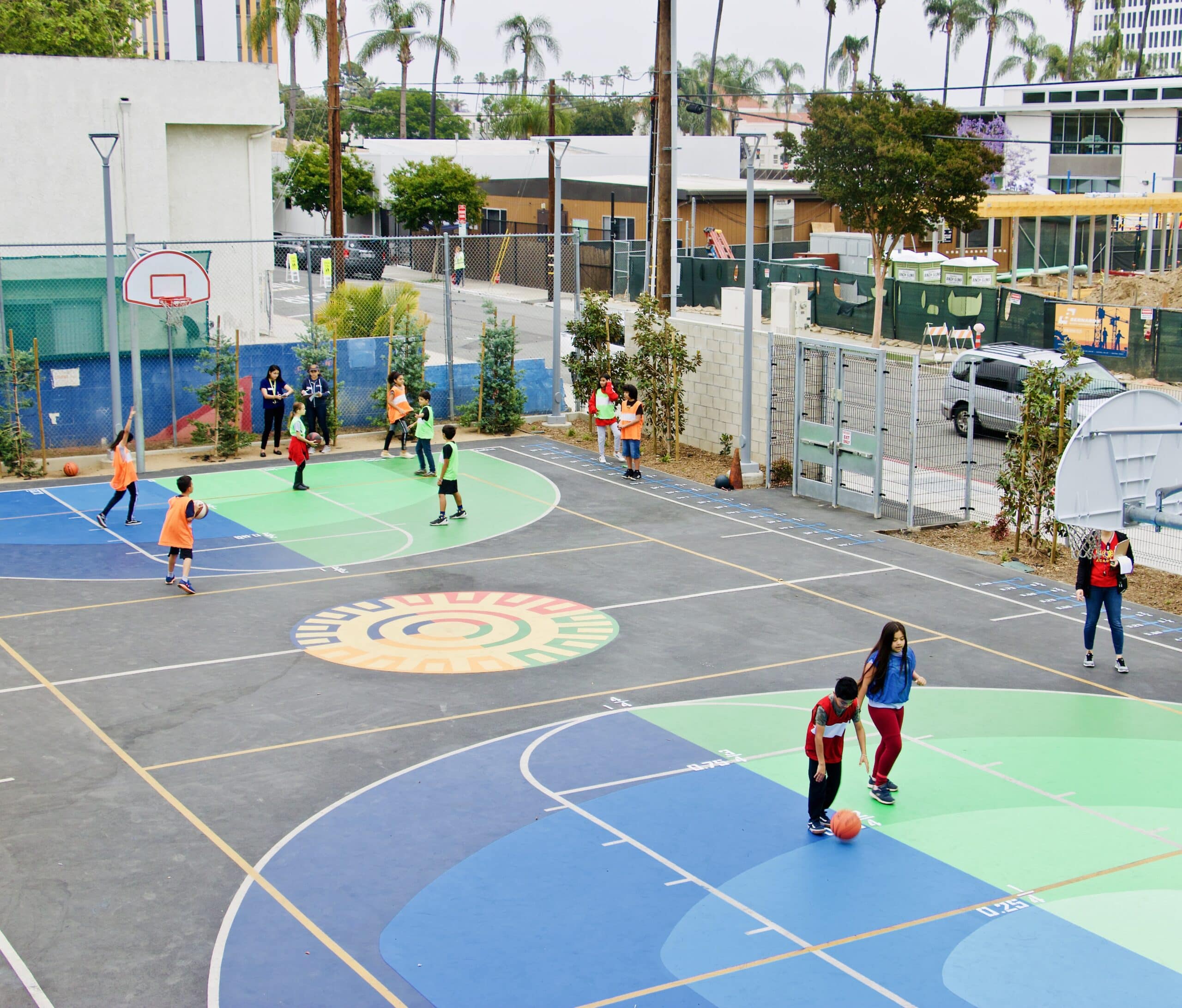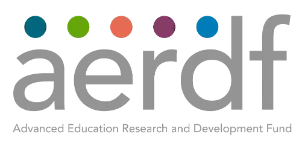The fourth installation in our EF+Math blog series is the final piece featuring our incredible project teams, this one focuses on Fraction Ball.
Introduction to Fraction Ball
As we announced in our opening blog of this series, Fraction Ball is one of three teams in the EF+Math portfolio that is continuing to develop and study our core hypothesis. The EF+Math program is investigating the big idea that the integration of executive function (EF) skill development in math learning approaches that address conceptual understanding and complex problem solving, in ways that afford equitable experiences in math learning, can dramatically increase students’ math outcomes. Each advancing team uniquely addresses the intersection of EF, mathematics, and equity, helping to answer EF+Math’s hypothesis and inform continued research and development in this intersection.
The visual below may help in understanding the complementary nature of each approach in the EF+Math Program’s portfolio.

Fraction Ball is an integral part of EF+Math’s portfolio approach as an innovative program that is reimagining how students learn fractions by combining physical movement, play, and mathematical thinking in uniquely engaging ways.
The Fraction Ball team addresses the long-standing challenge of teaching fractions, considered a crucial yet challenging gateway to advanced mathematical understanding, through its games which emphasize a playful learning approach, math-related emotions, fun, and collaboration. Math learning can elicit many emotions for students; Fraction Ball invites those emotions as part of the play and learning process. Further, Fraction Ball aims to increase the positive emotions, like joy and happiness, that students associate with doing mathematics, and decrease feelings of negative emotions, such as anxiety or stress. Fraction Ball implicitly supports students’ use of executive function skills in rational number learning contexts. Their work is also deepening our understanding of embodied cognition and students’ math-related emotions.
The Promise of Fraction Ball: Reimagining Fraction Learning Through Play
Fraction Ball’s focus on joy and play is unique and is a bright spot in innovative math learning. Bringing joy and play into math is novel in the field and intentionally designing for a playful context for math learning is transformational. This works to shift the mindset around math from something “boring” to something “fun”. And, research consistently demonstrates that mastery of fractions is crucial for future mathematical success. Often described as the “gatekeepers” to algebra, fractions and decimals represent a critical juncture in students’ mathematical journey. Fraction Ball’s approach is a promising solution for improving students’ learning outcomes on fractions.
 Photo. Kenny Lewis
Photo. Kenny Lewis
Fraction Ball’s program consists of a comprehensive 16-lesson unit, split between classroom activities and basketball court-based games, each running for 50 minutes. What makes Fraction Ball particularly special is its integration of rational number concepts into basketball-inspired games, complete with colorful court markings displaying fraction and decimal representations (e.g., 1/4-point, 1/2-point arcs) with an accompanying number line on the side of the court for scoring.
The program tackles key mathematical concepts that traditionally challenge students, including:
– Rational number understanding, including magnitude comparison
– Addition of fractions and decimals
– Translation between fraction and decimal representations by the placement of numbers on 0-to-1 and 0-to-5 number lines
We know rational numbers are an area where challenges come up in student reasoning, which impacts their executive function skills and their ability to try new strategies to solve problems. When learning fractions, we see one of the earliest examples of students changing and shifting what they know about math. They started to learn about the number line, addition, and subtraction. As their math learning advances, they are introduced to the notion that the ways they add and subtract are different than with whole numbers, and this shifts students’ understanding of what numbers mean. Fraction Ball offers opportunities for students to adaptively monitor, plan, update, and shift thinking within reasoning about rational numbers in basketball games and strategies.
What sets Fraction Ball apart is its commitment to “embodied learning” – a pedagogical approach that connects physical movement with mathematical understanding. By integrating basketball-inspired games with rational number point values and visual representations on the court, students engage with mathematical concepts in a tangible way. Fraction Ball games and lessons also aim to improve students’ math-related emotions and teamwork through collaborative learning.
The results are promising. Studies have shown that students participating in Fraction Ball demonstrate significant improvements in their rational number understanding, including their ability to add fractions and decimals, translate between fractions and decimal representations, and place fractions and decimals on 0 to 1 and 0 to 5 number lines. These results suggest that Fraction Ball’s approach to supporting EF skill use within physically engaging and game-based activities is impactful for math learning.
The program’s impact extends beyond mathematical comprehension. Research has revealed a notable decrease in negative emotions related to math among participants, alongside improvements in student confidence and self-efficacy. The collaborative nature of the games also promotes teamwork and positive social interactions, creating a supportive learning environment.
One of the program’s exciting additional research findings is its success in achieving results in students’ far transfer – the ability of students to learn something with one set of numbers and use them with a new set of numbers. This is a challenge in math education and Fraction Ball is moving the needle on this.
The Impact of Inclusive Research & Development Processes
The development of Fraction Ball’s games, curriculum, and activities is driven by the team’s commitment to equity, leading to unique product developments and findings. The program has been shaped by deep partnerships with local educational organizations and institutions, and perhaps most importantly, through direct collaboration and co-design with students and teachers.
A striking example of this collaborative approach comes from a group of female students known as the Femineers. Seeking to improve accessibility, these students developed an indoor version of the game using bottle caps. This adaptation was incorporated into the full unit and contributed to improved far-transfer results in subsequent studies.
The program benefited from extensive cooperation with mathematics curriculum specialists, school principals, and educators to ensure alignment with district goals and practical implementation needs. This has led to several valuable adaptations, including:
– Curriculum guides that integrate with existing district scope and sequence
– Classroom activities complementing court-based learning
– Addition of a “Tracker” role for data analysis
– Grade-level differentiation to ensure challenging experiences for returning students
The Fraction Ball team is led by a diverse team of educators and scholars, including the majority of project team members as leaders of color. The team has a deep commitment to building the leadership capacity of graduate students, and educators they work with.
What’s Next?
Currently implemented in over 40 schools across four Southern California districts, Fraction Ball continues to expand its reach and impact. Ongoing evaluation studies, including a larger-scale randomized control trial (RCT) study, are being conducted to further validate the program’s effectiveness in improving fraction knowledge.
Through Juego (gojuego.com), the team is working to scale their playful learning model to reach more students and educators. Plans are also underway to expand the program’s content into surrounding grade levels through initiatives like Number Ball. The team also developed a Fraction Ball video game which offers educators valuable insights into their students’ fraction and executive function abilities through an assessment via gameplay features. This “stealth” assessment gathers data useful to researchers and educators, while avoiding testing burden on students or invoking test anxiety
As mathematics educators continue to seek innovative ways to engage students and improve learning outcomes, Fraction Ball stands as a shining example of how movement, play, and mathematical thinking can come together to create transformative educational experiences. By making mathematics not just accessible but genuinely enjoyable, Fraction Ball is helping to reshape students’ relationship with mathematical learning, one game at a time.



